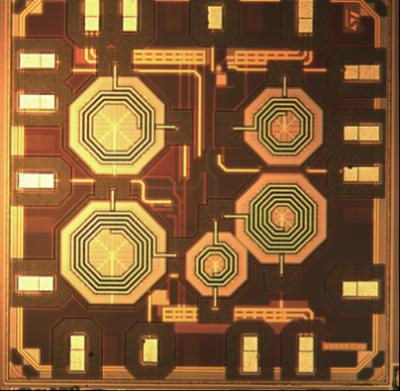EE4520 Analog CMOS design I
Topics: Design of basic analog circuits in modern CMOS technology
The goal of this course is to introduce students to the design of basic analog circuits in modern CMOS technology. Students will learn about the operation of MOSFETs, how they can be used to realize basic analog circuits and how to verify the performance of these circuits with the help of Spice-like circuit simulators (LTSpice will be used during the course).
Covered topics:
- DC, AC and transient analysis.
- Opamps and feedback: effect of feedback on impedances; frequency behavior; time-domain behavior & stability; asymptotes & feedback; signal integrity.
- The MOS transistor: regions of operation; simplified model for hand-calculations; second-order effects.
- Single-Stage Amplifiers: DC behavior; AC Behavior; transient behavior; fundamental limitations.
- Cascoding: effect on DC gain; effetc of MOS ft.
- Noise: origins & properties, noise in circuit design.
- Distortion: calculation procedure; symmetrical systems; distortion and feedback.
Study Goals
- Students can explain the different region of operation of MOS transistors; they can apply the simplified model to CMOS circuit analysis and assess the effect of second-order effects.
- Student can perform hand-calculation for AC, DC and transient analysis of CMOS circuits
- Students can derive the performance of simple CMOS circuits (such as single-stage amplifiers) in terms of amplification, noise and distortion.
- Students can design and optimize simple CMOS circuits (single-stage amplifiers, cacoded amplifiers).
- Student can derive performance of CMOS circuits by means of a Spice-like circuit simulator and compare the results to simplified hand-calculation.
Teachers
dr. Fabio Sebastiano
cryogenic electronics, quanutm computation, analog/mixed-signal circuit design, frequency references, sensors, sensor readout
prof.dr. Klaas Bult
Last modified: 2023-11-04

Details
| Credits: | 3 EC |
|---|---|
| Period: | 0/4/0/0 |
| Contact: | Klaas Bult |